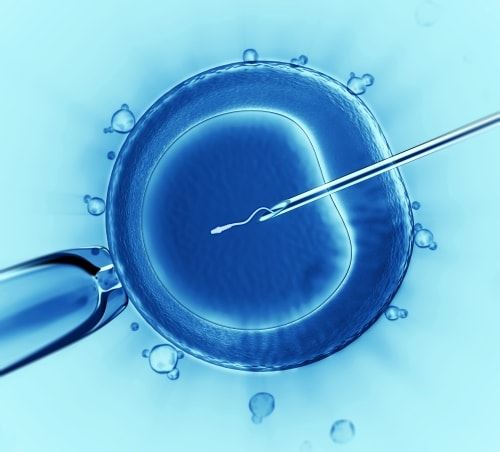Having A Baby After A Vasectomy
- Category: Male Fertility
- Written By: Atlanta Center for Reproductive Medicine
 Vasectomies are a widely used method of contraception today. The failure rate is extremely low such that they are a very dependable way of avoiding unwanted pregnancy. Sometimes a man who thought his family was complete may change his mind and want to have more children after a vasectomy has been performed. There are a couple of ways of resolving this dilemma.
Vasectomies are a widely used method of contraception today. The failure rate is extremely low such that they are a very dependable way of avoiding unwanted pregnancy. Sometimes a man who thought his family was complete may change his mind and want to have more children after a vasectomy has been performed. There are a couple of ways of resolving this dilemma.
How to get pregnant after a Vasectomy
To be able to have children after a vasectomy you can undergo a vasectomy reversal or try In vitro fertilization (IVF) and intra-cytoplasmic sperm injection (ICSI) using aspirated sperm.
VASECTOMY REVERSAL
The traditional approach has been to carry out a second surgical procedure wherein the severed vas deferens (the tubes within the scrotal sac which carries sperm from the testicles to the outside world) is sewn back together. This is a microsurgical procedure which is actually far more technically involved and complicated than the original vasectomy where a piece of the vas was burned, removed or clipped. The procedure will typically take a couple of hours to perform and is done by urologists with who have undergone specialized microsurgical training. The procedure can be technically successful in 60-70% of cases if the vas deferens was not excessively destroyed in the original vasectomy procedure. Unfortunately, these results are not always the case and the actual patency rate (i.e. sperm are found in the ejaculate after the procedure) is lower.
The other complicating factor with surgical repair is the prevalence of anti-sperm antibodies. These antibodies will prevent normal sperm function if they are present. They are found increasingly frequently the longer it has been since the original vasectomy was performed. Most researchers agree that they are rarely found within 5 years from the original vasectomy and are almost always present more than 10 years from the original procedure. In these latter cases, even if the vasectomy reversal procedure is technically successful, the sperm will not be normally functional therefore the surgery probably will not lead to successful conception.
It may take a few months to see sperm within the ejaculate following a reversal procedure and unfortunately in some cases despite sperm being present initially post-operatively, there is progressive scarring which leads to re-closure of the vas.
IN VITRO FERTILIZATION (IVF) AND INTRA-CYTOPLASMIC SPERM INJECTION (ICSI)
The other approach available today is to carry out In vitro fertilization (IVF) and intra-cytoplasmic sperm injection (ICSI) using aspirated sperm. We've always been able to aspirate sperm using a fine gauge needle directly from the testicles. Under local anesthesia, it is quite realistic to pass a needle directly through the scrotum into the testicle itself or the epididymis (the network of tubules adjacent to the testicle where sperm finish their maturation process and are stored prior to ejaculation) and aspirate sperm. The limiting factor has always been that we can only retrieve thousands of sperm in this fashion and we need tens of millions for intercourse to establish pregnancy or millions for inseminations to do so. Using the technology of IVF/ICSI however, we only need one sperm for each egg available. Since we may typically get 10-15 eggs during an IVF cycle, we'd only need 10-15 sperm for success. Therefore the sperm aspirated in this fashion are more than enough for multiple attempts.
The advantages of IVF/ICSI versus vasectomy reversal are multiple. Success rates do not depend On how much damage was caused by the original vasectomy. The presence or absence of anti-sperm antibodies is irrelevant because the sperm do not need to be able to swim on their own during IVF/ICSI. Also because IVF is being done, female fertility problems such as tubal issues, endometriosis, ovulation problems and so on are all automatically being bypassed.
Success rates for IVF/ICSI using aspirated sperm following vasectomy are among the highest in couples doing IVF and the live birth rates are certainly equal if not better than those seen following vasectomy reversal. Lastly this approach is far more efficient in that the whole process from beginning of testing to starting obstetrical care could certainly be carried out in a 2-3 month time frame whereas the surgery itself may be carried out a month or so after testing, it may require months to see normal sperm in the ejaculate and the couple may then have to try for several months before conceiving.
For more information about conception after a vasectomy, and to schedule an appointment with any of ACRM’s fertility experts, call 678-841-1089 or click here.



